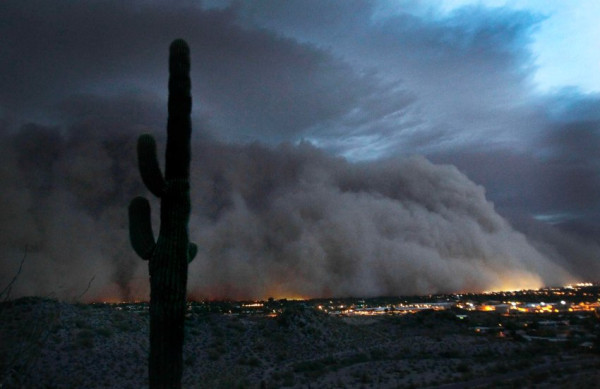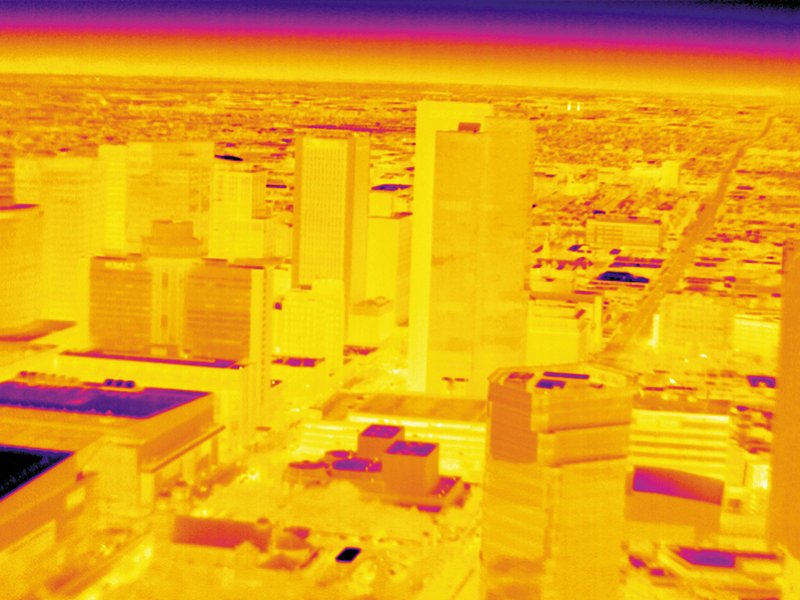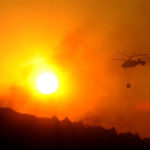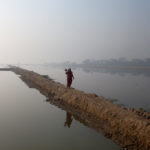Using Phoenix, Arizona, as an example of where global warming has resulted in inhuman heat and extreme weather, Jerry Adler in Smithsonian wonders if human beings will be able to keep their cool? New research shows that climate change may cause 26,000 more U.S. suicides by 2050.


The Reality of a Hotter World is Already Here
By Jerry Adler, Published By Smithsonian Magazine
Douglas Kenrick, rangy and grizzled, squints through the shimmering heat of a late-summer afternoon in the Sonora desert. “You live here long enough,” he says, crossing to the south side of an empty street for the five-minute walk across the campus of Arizona State University, “and you become like a desert animal, searching out shade.” Having grown up on Long Island, and coming from the frequently snowbound campus of Montana State University, he relished the heat when he moved to Phoenix in 1980, but by the end of his first full summer, it had become oppressive. “I came from New York with the attitude that it can’t ever be too hot for me,” says Kenrick, “but I was wrong.” It seems likely that most people who move to Phoenix, where the temperature reached 118 degrees one day last June, make the same discovery, but as an evolutionary psychologist, Kenrick wanted to do more than complain about the climate. So he did an experiment.
“We will see the emergence of novel climates, environments we’ve not seen before in human times, and the extinction of others, around the Arctic and in high Alpine regions,” says Laurence C. Smith, a professor of geography at UCLA and author of The World in 2050.
Unusually hot days cause the suicide rate to rise, according to a study published July 2018 in Nature Climate Change. If a month is 1 degree Celsius warmer than normal, then its suicide rate will increase by 0.7 percent in the United States and 2.1 percent in Mexico.
[vimeo clip_id="26045314" width=600 height=338 ]
Dust storms in Phoenix are common, but the conditions that form them, heat, lack of rain, and high winds, have all become more significant. The Phoenix Haboob of July 5th, 2011, By Mike Olbinski.
STORY: Stanford Scientist Plans US Transformation to Clean Energy
His method had the elegance of all great science: He recruited a volunteer to stop her car at a green light and he counted the seconds until the driver behind honked the horn. He did this once a week from April to August, on days when the high temperature ranged from 84 degrees to 108, and he found that the thermometer accurately predicted how soon, and how many times, thwarted drivers would protest before the light changed. “When the weather was comfortably cool, the typical driver just politely tapped on the horn for a second,” Kenrick wrote. “When it got up near 100, though, they started blaring their horns, yelling out the window, and making hand signals they probably did not learn in driver’s education.”
Solomon Hsiang, a public policy specialist at UC Berkeley, has found that climate change historically leads to social disruption, up to and including war. For reasons Hsiang is still studying, hotter temperatures depress economic activity. In a study of 28 Caribbean economies, he found that “short-term increases in surface temperature are associated with large reductions in economic output. I was stunned by how large the effect was.”
The link between heat and anger—people are “fired up” or “steamed up,” or they “keep their cool”—is so deeply embedded in folk wisdom that it has gone mostly unquestioned. But it is increasingly a subject for psychologists and other social scientists concerned about the implications of a world in which 108 degrees may no longer be exceptional. Under one scenario studied by the Centers for Disease Control and Prevention, by the end of the century, today’s North Carolina summers would become the norm for New Hampshire, while Louisiana’s climate would migrate up to Illinois. In Phoenix itself, “temperatures could regularly hit the 130s…by the second half of this century,” University of Arizona climatologist Jonathan Overpeck has predicted.
httpvh://youtu.be/Y9iBC0b2P1I
When the Earth falls out of orbit, two women try to cope with increasingly oppressive heat in a nearly abandoned city. The Twilight Zone, “The Midnight Sun,” Directed By Anton Leader and Written By Rod Serling, 1961.
Science fiction is one way to get a feel for what daily life might be like in a hotter world. Another way is to go to Phoenix during a late-September heat wave when temperatures hover around 105, where the first thing you learn about the future is that it will apparently be lived indoors. — Jerry Adler
STORY: Climate Warming Catastrophe, Mass Extinctions Underway


The various environmental effects of greenhouse gases are potentially devastating, as we have often heard. The latest Intergovernmental Panel on Climate Change report, made public in March, underscored the danger of widespread hunger, even starvation, resulting from crop failures. Other health threats have been enumerated by Robert Repetto, a United Nations Foundation economist, who says climate change will intensify smog, leading to “increased outbreaks of asthma and allergies,” and “exacerbate vector-borne diseases such as hantavirus, West Nile virus, Lyme disease and dengue fever.”
There may be hordes of climate refugees, fleeing homes on islands and coasts made uninhabitable by climate change—anywhere from 25 million to 1 billion people by 2050, according to the International Organization for Migration.
Repetto also worries about the “extreme weather events” that some researchers say climate change will engender. “Biological systems and engineering systems are all designed for a range of climatic conditions,” he says. “Within those limits, we’re OK, …but outside those limits, the damage increases rapidly and becomes catastrophic, and we’re going outside those limits.” Heat waves themselves pose a health risk, especially for young children and the elderly—and world-class athletes. Temperatures at the Australian Open in January reached 104 degrees for four consecutive days, a condition that one tennis player called “inhumane” after competitors collapsed on the court.
To read the entire article, see “The Reality of a Hotter World is Already Here”
Updated: 24 July 2018













Not sure what Mr. Adler’s article focusing on Phoenix and heat was trying to achieve. Having worked in the Sahara in the eighties, wearing coveralls and safety helmets (and drinking lots of water) along with my Touareg friends in woolen clothing, I fondly remember our glorious 120 degF summer days. In retrospect I now believe I should have patented the “Global Warming” expression. But surely the Touaregs would have told me to get a life. And keep on working.
Okay, Mr. Levy, maybe you consider that millions turning into climate refugees throughout the world should just get a life, where the Phoenix desert climate shifts northeast to the plains and west to Southern California, and people who are accustomed to air conditioning inside insulated homes and cars are somehow analogous to nomadic folks fully adapted to the desert, then I got you. You don’t get it. But thanks for the comment.